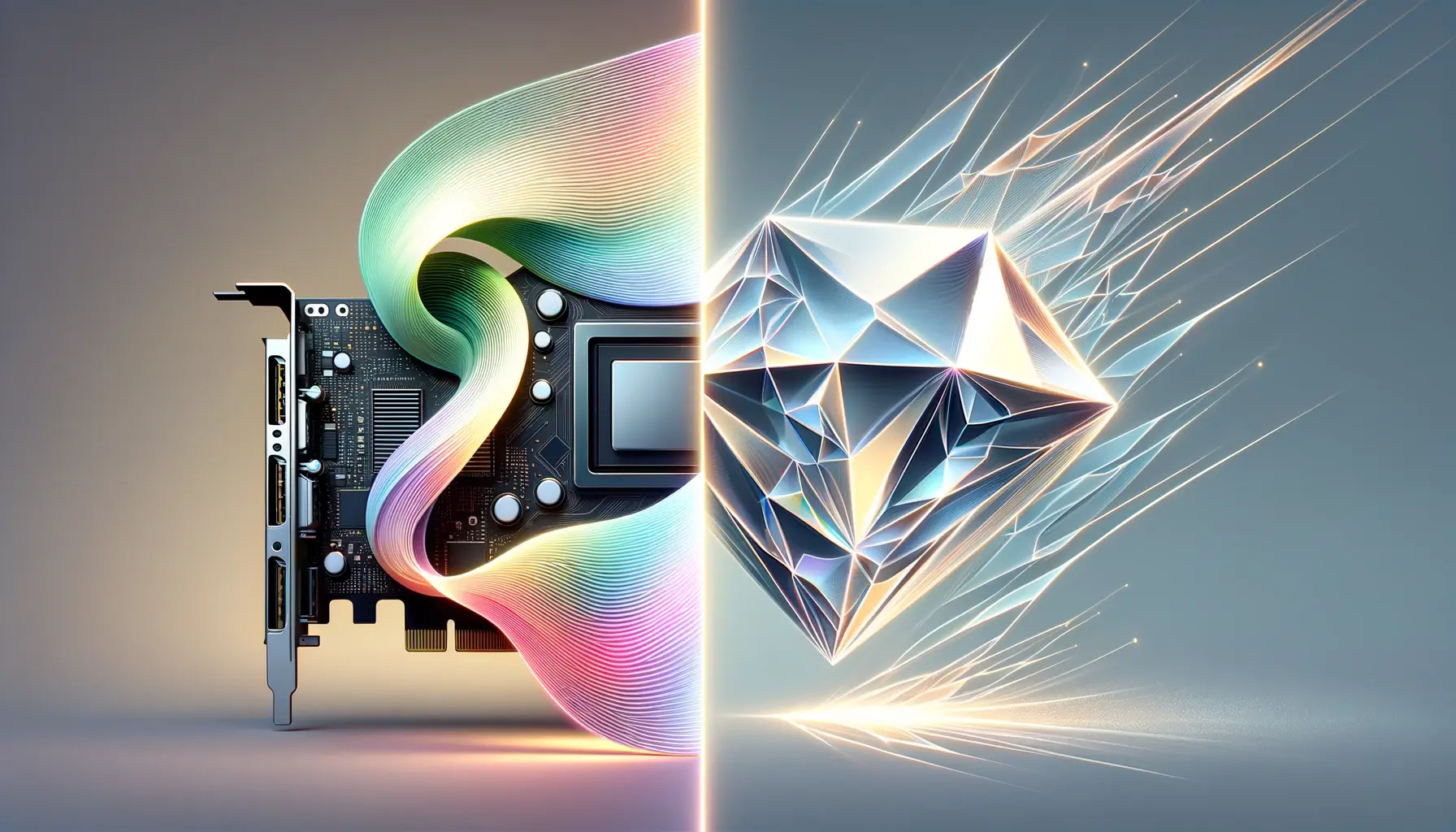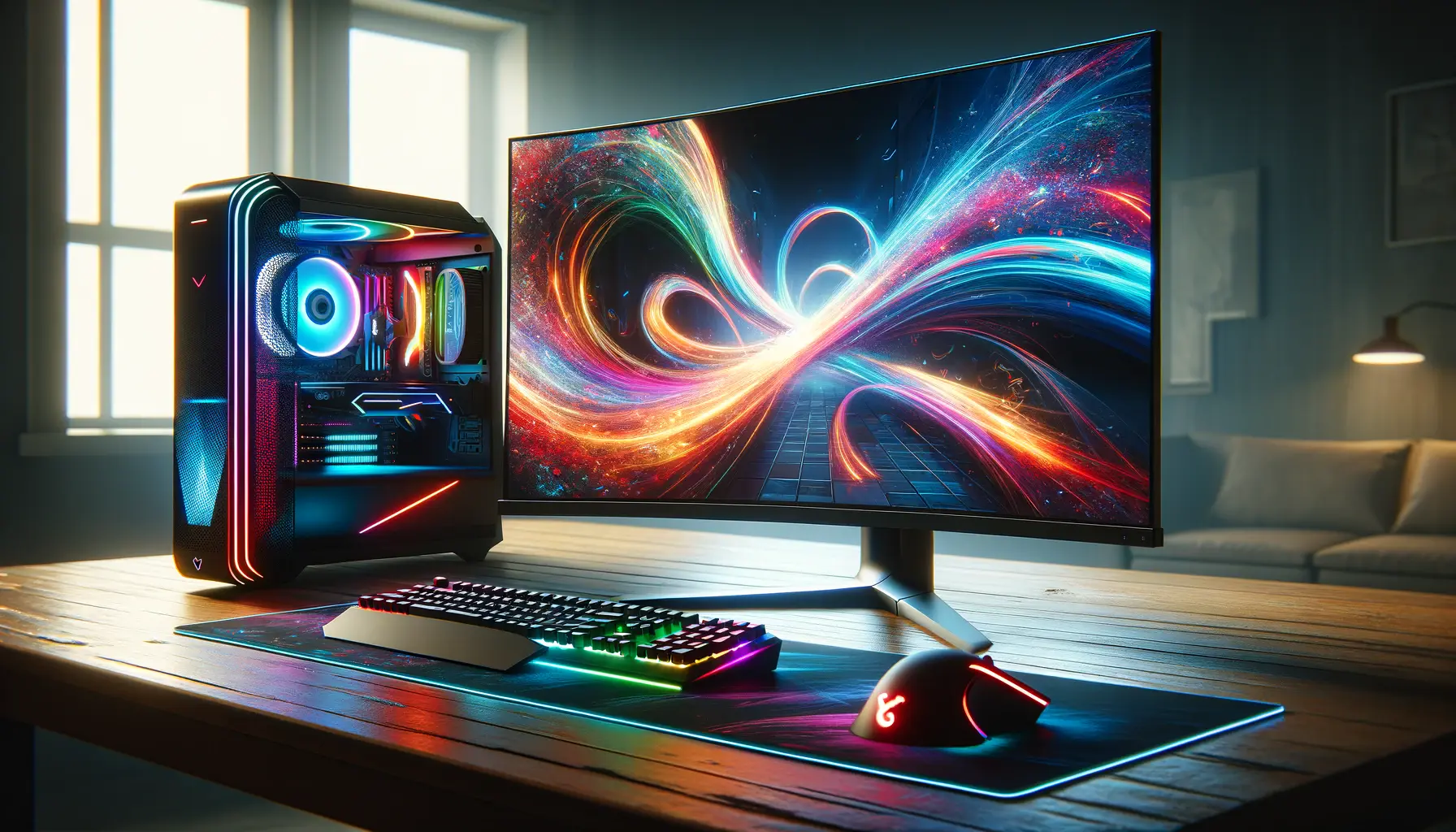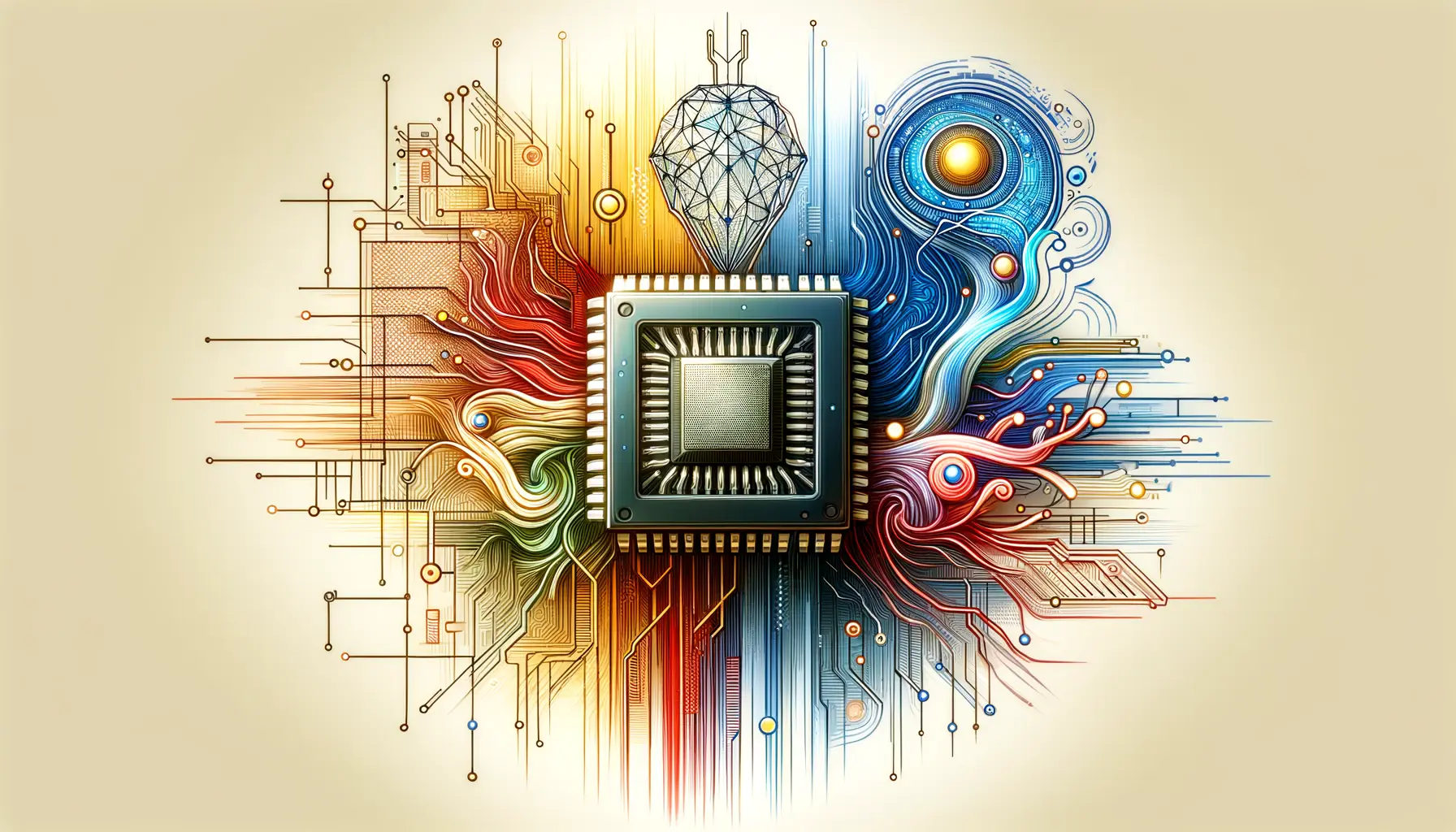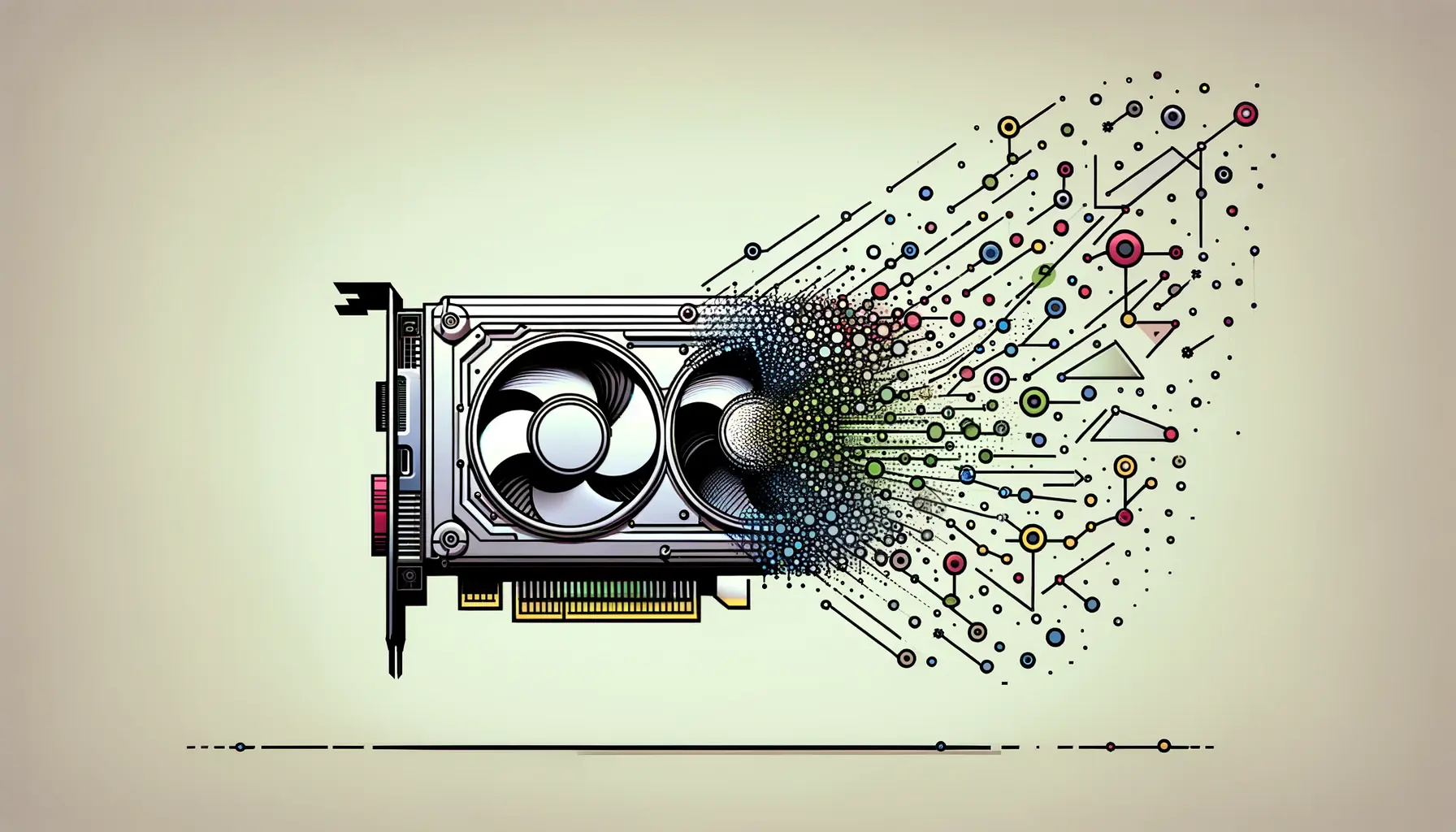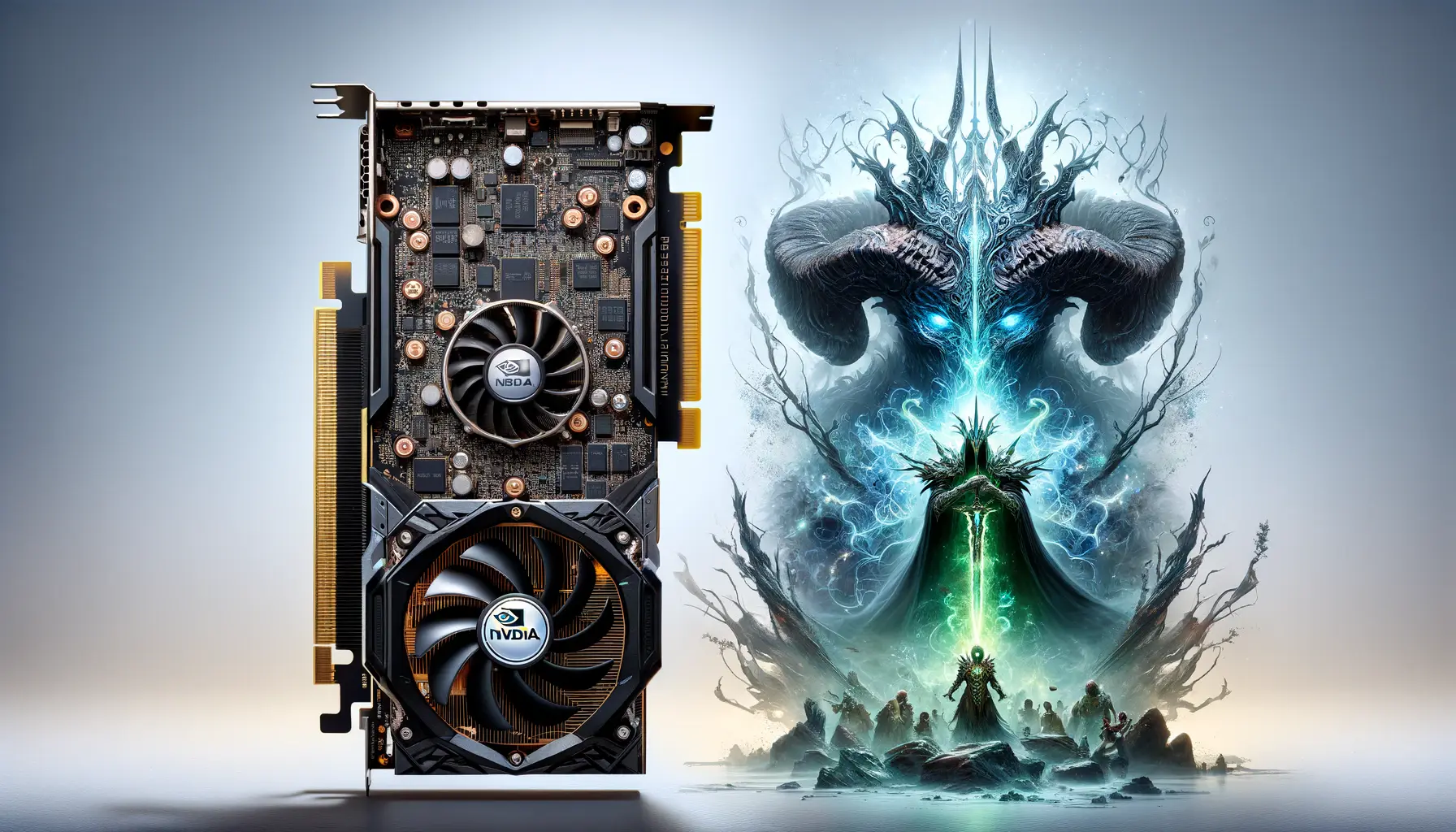The evolution of gaming graphics has been a relentless pursuit of realism and performance, a journey marked by significant technological milestones.
Among the latest advancements, NVIDIA’s Deep Learning Super Sampling (DLSS) 3 and Ray Tracing stand out as two pivotal technologies reshaping the visual fidelity and performance of video games.
These technologies, while distinct in their approach and application, share a common goal: to elevate the gaming experience to unprecedented levels of detail and smoothness.
This article delves into the intricacies of DLSS 3 and Ray Tracing, exploring their individual contributions and the delicate balance between quality and performance they offer within the realm of gaming graphics.
DLSS 3, NVIDIA’s groundbreaking AI-powered rendering technology, represents a significant leap forward in the quest for hyper-realistic graphics without compromising performance.
By leveraging advanced AI algorithms, DLSS 3 intelligently upscales lower-resolution images in real-time, achieving near-native resolution quality with a fraction of the computational load.
This innovation not only enhances visual quality but also ensures smoother gameplay, even in the most graphically demanding titles.
On the other hand, Ray Tracing, with its ability to simulate the physical behavior of light, brings a level of realism to digital environments that was once thought unattainable.
The interplay between these technologies raises intriguing questions about the future of gaming graphics and the optimal strategies for balancing visual fidelity with system performance.
- Understanding DLSS 3 and Its Impact on Gaming
- The Role of Ray Tracing in Modern Gaming
- Comparing DLSS 3 and Ray Tracing: A Synergistic Relationship
- Impact of DLSS 3 and Ray Tracing on Game Development
- Future Trends in Gaming Graphics
- Optimizing Gaming Setups for DLSS 3 and Ray Tracing
- Community and Developer Feedback on DLSS 3 and Ray Tracing
- Embracing the Future of Gaming Graphics with DLSS 3 and Ray Tracing
- DLSS 3 and Ray Tracing: Your Questions Answered
Understanding DLSS 3 and Its Impact on Gaming
What is DLSS 3?
At its core, DLSS 3 is NVIDIA’s latest iteration of Deep Learning Super Sampling technology, designed to push the boundaries of gaming performance and visual quality.
By utilizing a deep neural network, DLSS 3 analyzes each frame to intelligently generate high-resolution images from lower-resolution inputs.
This process, known as upscaling, allows games to run at higher frame rates without sacrificing the detail and clarity that come with higher resolutions.
The result is a smoother and more immersive gaming experience, even on hardware that might otherwise struggle to maintain performance at high graphical settings.
The significance of DLSS 3 extends beyond mere performance improvements.
It represents a paradigm shift in how games are rendered, moving away from traditional methods towards a future where AI plays a central role in graphics processing.
This shift not only benefits gamers with enhanced visual experiences but also developers, who can now create more detailed and expansive game worlds without being constrained by hardware limitations.
The Benefits of DLSS 3
One of the most compelling advantages of DLSS 3 is its ability to deliver a significant boost in frame rates while maintaining, or even improving, visual quality.
This is particularly beneficial in titles that utilize Ray Tracing, which, while visually stunning, can be demanding on system resources.
DLSS 3 mitigates this by allowing Ray Tracing to be enabled without the usual performance penalty, making it accessible to a wider range of systems.
Furthermore, DLSS 3’s AI-driven approach adapts and improves over time, offering continuous enhancements to image quality and performance as NVIDIA’s neural networks are further trained.
Another key benefit of DLSS 3 is its versatility.
It supports a wide range of titles, from fast-paced competitive shooters to expansive open-world games, each benefiting from the technology’s ability to upscale images dynamically.
This ensures that regardless of the game’s genre or graphical intensity, players can enjoy a seamless and visually rich gaming experience.
Additionally, DLSS 3’s impact on VR gaming cannot be overstated, as it significantly reduces the visual artifacts that can detract from immersion, providing a clearer and more engaging virtual reality experience.
DLSS 3’s AI-driven upscaling technology not only enhances gaming performance but also paves the way for more immersive and visually stunning gaming experiences, setting a new standard for what gamers can expect from future titles.
The Role of Ray Tracing in Modern Gaming
Ray Tracing stands as a revolutionary technology in the realm of computer graphics, offering a level of realism previously unattainable in video games.
By simulating the way light interacts with objects in a virtual environment, Ray Tracing enhances the overall visual quality of games, introducing realistic reflections, shadows, and lighting effects.
This technology has been a game-changer for the industry, setting new standards for graphical fidelity and immersion.
Despite its impressive capabilities, Ray Tracing is known for its demanding nature on system resources, which can lead to performance challenges on less capable hardware.
This is where technologies like DLSS 3 come into play, offering a solution that allows gamers to enjoy the benefits of Ray Tracing without the associated performance hit.
Key Features of Ray Tracing
- Realistic Lighting: Ray Tracing accurately simulates the behavior of light, including its interaction with different surfaces and materials, leading to more lifelike scenes.
- Improved Shadows and Reflections: It enhances the quality of shadows and reflections, making them more dynamic and realistic, which adds depth to the game world.
- Enhanced Detail and Immersion: By providing a more accurate representation of the physical world, Ray Tracing increases the level of detail and immersion in games, making virtual environments feel more tangible.
Challenges and Solutions
The primary challenge posed by Ray Tracing is its impact on performance.
High-fidelity Ray Tracing effects can significantly reduce frame rates, affecting the smoothness of gameplay.
This challenge is particularly pronounced at higher resolutions, where the computational demand of Ray Tracing increases exponentially.
DLSS 3 addresses these challenges by enabling gamers to activate Ray Tracing settings without compromising on frame rates.
Through its AI-driven upscaling, DLSS 3 allows for the rendering of games at lower resolutions, which are then intelligently upscaled to higher resolutions.
This process significantly reduces the performance impact of Ray Tracing, making it a viable option even for mid-range gaming setups.
While Ray Tracing enhances visual realism in games, its performance impact can be mitigated with technologies like DLSS 3, ensuring that gamers do not have to choose between visual quality and smooth gameplay.
Comparing DLSS 3 and Ray Tracing: A Synergistic Relationship
The relationship between DLSS 3 and Ray Tracing is not one of competition but of synergy, where each technology complements the other to enhance the gaming experience.
While Ray Tracing focuses on improving visual realism through accurate light simulation, DLSS 3 ensures that these enhancements can be enjoyed without sacrificing performance.
This section delves into the comparative aspects of both technologies, highlighting how they work together to balance quality and performance in modern gaming.
Understanding the distinct roles of DLSS 3 and Ray Tracing is crucial for appreciating their combined impact on gaming.
DLSS 3, with its AI-driven approach to upscaling, allows games to run at higher frame rates by rendering at lower resolutions and then intelligently upscaling the output.
This process is particularly beneficial when paired with Ray Tracing, as the latter’s computational demands can be offset by DLSS 3’s efficiency, enabling a smoother gaming experience without compromising on visual fidelity.
Enhancing Visual Quality with Ray Tracing
- Ray Tracing’s ability to simulate realistic lighting, shadows, and reflections adds a layer of depth and realism to game environments that traditional rasterization techniques cannot match.
- The technology’s impact on visual quality is most pronounced in scenes with complex lighting scenarios, such as nighttime scenes or interiors with multiple light sources.
Preserving Performance with DLSS 3
- DLSS 3’s upscaling technique significantly boosts frame rates, making it possible to enable Ray Tracing in games without experiencing a noticeable drop in performance.
- The technology adapts in real-time, ensuring that the upscaling process is optimized for each individual frame, which is essential for maintaining consistent performance across various gaming scenarios.
The synergy between DLSS 3 and Ray Tracing exemplifies how modern gaming technologies can work together to push the boundaries of what’s possible in video games.
By leveraging the strengths of each technology, developers can create more immersive and visually stunning gaming experiences that were once beyond the reach of real-time rendering.
The combination of DLSS 3 and Ray Tracing represents a significant advancement in gaming technology, offering an optimal balance between unparalleled visual quality and high performance.
Impact of DLSS 3 and Ray Tracing on Game Development
The advent of DLSS 3 and Ray Tracing technologies has not only transformed the gaming experience for players but also revolutionized the game development process.
These technologies offer developers new tools and possibilities for creating visually stunning and immersive games.
This part explores how DLSS 3 and Ray Tracing are influencing game development, from enhancing graphical fidelity to redefining performance benchmarks.
DLSS 3 and Ray Tracing enable developers to achieve a level of visual quality and performance that was previously unattainable.
With these technologies, the creation of highly detailed and dynamic game environments becomes more feasible, allowing for more creative freedom and innovation in game design.
The impact of these advancements extends across various aspects of game development, including art direction, environmental design, and gameplay mechanics.
Enhancing Graphical Fidelity
- DLSS 3 allows for higher frame rates without compromising on visual quality, enabling developers to include more detailed textures and complex models in their games.
- Ray Tracing brings realistic lighting, shadows, and reflections to game environments, making them more lifelike and immersive. This realism enhances the storytelling and emotional impact of games.
Optimizing Performance
- With DLSS 3, games can run smoothly on a wider range of hardware, broadening the potential audience for high-end games.
- The efficiency of DLSS 3 in upscaling images allows developers to implement Ray Tracing in their games without the need for players to have the latest, most powerful hardware.
The integration of DLSS 3 and Ray Tracing into the game development process also encourages innovation in game mechanics and storytelling.
For instance, the enhanced realism provided by Ray Tracing can be used to create more engaging and immersive narrative experiences, while the performance improvements offered by DLSS 3 can enable more dynamic and interactive game worlds.
As developers continue to explore the capabilities of these technologies, the future of game development looks promising, with the potential for even more groundbreaking and immersive gaming experiences.
The influence of DLSS 3 and Ray Tracing on game development marks a significant shift towards creating more immersive, visually stunning, and accessible gaming experiences, setting new standards for the industry.
Future Trends in Gaming Graphics
The gaming industry is on the cusp of a new era, with DLSS 3 and Ray Tracing leading the charge towards more immersive and realistic gaming experiences.
These technologies are just the beginning, as future trends in gaming graphics promise to bring even more significant changes.
This part explores the potential future directions of gaming graphics, considering the impact of current technologies and predicting how they might evolve.
As we look to the future, the continuous advancement in AI and machine learning, along with hardware improvements, will play a pivotal role in shaping the next generation of gaming graphics.
These developments will not only enhance the visual fidelity of games but also make advanced graphical features more accessible to a broader audience.
Advancements in AI and Machine Learning
- Future iterations of DLSS and similar technologies will likely offer even more efficient upscaling and image enhancement capabilities, further bridging the gap between performance and visual quality.
- AI-driven procedural content generation could revolutionize game design, allowing for more dynamic and expansive game worlds that react to player actions in real-time.
Hardware Innovations
- The next generation of GPUs will be designed with Ray Tracing and AI-driven technologies like DLSS in mind, offering native support and enhanced performance for these features.
- As hardware becomes more powerful and efficient, developers will have more freedom to implement complex graphical effects without worrying about performance constraints.
The integration of cloud gaming and streaming services will also influence future trends in gaming graphics.
These platforms can leverage powerful server-side hardware to render games at high resolutions and frame rates, streaming the output to devices that would otherwise be incapable of running such graphically intensive games locally.
This could democratize access to high-quality gaming experiences, making them available on a wide range of devices, from smartphones to low-end PCs.
Moreover, the push towards more sustainable and energy-efficient gaming solutions may drive innovations in graphics technologies that deliver high performance without excessive power consumption.
This balance between performance, visual quality, and energy efficiency will be crucial as the industry moves forward.
The future of gaming graphics is bright, with technologies like DLSS 3 and Ray Tracing setting the stage for even more immersive and accessible gaming experiences, powered by advancements in AI, machine learning, and hardware innovation.
Optimizing Gaming Setups for DLSS 3 and Ray Tracing
As DLSS 3 and Ray Tracing redefine the landscape of gaming graphics, optimizing gaming setups to fully leverage these technologies becomes crucial for enthusiasts seeking the best possible experience.
This part provides insights into how gamers can tailor their hardware and settings to harness the full potential of DLSS 3 and Ray Tracing, ensuring an optimal balance between performance and visual fidelity.
Understanding the hardware requirements and configuration settings that best complement DLSS 3 and Ray Tracing is essential for gamers looking to upgrade or fine-tune their setups.
From selecting the right graphics card to adjusting in-game settings, each decision plays a significant role in the gaming experience.
Selecting the Right Hardware
- Graphics Card: Opt for NVIDIA RTX series cards that support DLSS 3 and Ray Tracing. The latest models offer the best performance, but even older RTX cards can provide a good experience with these technologies.
- CPU and Memory: Ensure your CPU and RAM can keep up with the demands of modern games, especially when using Ray Tracing, which can increase the load on the system.
- Display: A high-refresh-rate monitor is recommended to take full advantage of the increased frame rates provided by DLSS 3, enhancing the smoothness of gameplay.
Adjusting In-Game Settings
- Enable DLSS: Activate DLSS 3 in the game’s graphics settings, choosing the option that best balances performance and visual quality based on your preference and hardware capabilities.
- Ray Tracing Settings: Experiment with different levels of Ray Tracing effects to find the sweet spot that offers the best visual experience without significantly impacting performance.
- Resolution and Refresh Rate: Consider playing at a lower native resolution or with a locked refresh rate to further improve performance while still enjoying the benefits of DLSS upscaling and Ray Tracing.
Additionally, keeping drivers and game patches up to date is crucial for ensuring compatibility and optimizing performance with DLSS 3 and Ray Tracing.
Developers and NVIDIA frequently release updates that can enhance the efficiency and effectiveness of these technologies.
By carefully selecting and configuring their hardware and settings, gamers can enjoy the cutting-edge visual enhancements offered by DLSS 3 and Ray Tracing without compromising on performance.
This optimization ensures that players can immerse themselves in the most graphically demanding games, experiencing them as the developers intended.
Neglecting to optimize your gaming setup for DLSS 3 and Ray Tracing can lead to suboptimal gaming experiences, underscoring the importance of understanding and implementing the right hardware and settings.
Community and Developer Feedback on DLSS 3 and Ray Tracing
The introduction of DLSS 3 and Ray Tracing has sparked a significant amount of feedback from both the gaming community and developers.
This feedback has been instrumental in shaping the evolution of these technologies, highlighting their impact on the gaming experience and influencing future developments.
This part explores the perspectives of gamers and developers on DLSS 3 and Ray Tracing, shedding light on their experiences and expectations.
Community feedback has been largely positive, with gamers praising the visual improvements and performance enhancements brought about by DLSS 3 and Ray Tracing.
However, this feedback also includes constructive criticism, which has been crucial for NVIDIA and game developers to refine and improve these technologies.
Gamer Perspectives
- Visual Quality: Gamers have lauded the significant visual enhancements enabled by Ray Tracing, noting the more immersive and realistic gaming environments it creates.
- Performance Improvements: The positive impact of DLSS 3 on game performance, particularly in titles that are graphically intensive, has been a highlight for many in the community.
- Accessibility: Some gamers have expressed concerns about the hardware requirements for enabling these technologies, emphasizing the need for more accessible options for mid-range setups.
Developer Insights
- Technological Adoption: Developers have been keen to adopt DLSS 3 and Ray Tracing, citing the ability to push the boundaries of graphical fidelity and performance in their games.
- Challenges and Opportunities: While excited about the possibilities, developers also acknowledge the challenges in integrating these technologies, such as the additional development time and resources required.
- Future Potential: Many developers are optimistic about the future of gaming graphics, seeing DLSS 3 and Ray Tracing as stepping stones to even more advanced and immersive technologies.
The feedback from both gamers and developers underscores the transformative potential of DLSS 3 and Ray Tracing for the gaming industry.
It highlights a shared enthusiasm for the advancements these technologies represent, as well as a collective desire for continued innovation and improvement.
As DLSS 3 and Ray Tracing continue to evolve, the ongoing dialogue between NVIDIA, game developers, and the gaming community will be crucial for maximizing their impact and ensuring they meet the needs and expectations of all stakeholders.
The feedback on DLSS 3 and Ray Tracing from the gaming community and developers alike reflects a broad consensus on their positive impact, while also pointing towards areas for further refinement and development.
Embracing the Future of Gaming Graphics with DLSS 3 and Ray Tracing
The journey through the landscapes of DLSS 3 and Ray Tracing technologies reveals a future of gaming that is not only visually stunning but also remarkably efficient.
As we’ve explored the synergies between these two groundbreaking technologies, it’s clear that they represent more than just advancements in gaming graphics; they symbolize a new era of immersive gaming experiences.
This conclusion aims to encapsulate the essence of DLSS 3 and Ray Tracing, offering a glimpse into the future they are shaping for gamers and developers alike.
The Harmonious Interplay of Performance and Quality
The relationship between DLSS 3 and Ray Tracing is a testament to the incredible potential of combining AI with real-time ray-traced graphics.
DLSS 3, with its AI-driven upscaling, ensures that games not only look better but run smoother, even on hardware that doesn’t belong to the high end of the spectrum.
Ray Tracing, on the other hand, brings a level of realism to games that was once thought impossible, with accurate lighting, shadows, and reflections that can make virtual worlds indistinguishable from reality.
Together, they offer a balance of performance and quality that sets a new standard for what games can look like and how they can perform.
Driving Innovation in Game Development
The impact of DLSS 3 and Ray Tracing extends beyond the gaming experience, reaching deep into the realm of game development.
These technologies are not just tools but catalysts for creativity, enabling developers to push the boundaries of what’s possible in video games.
From creating more detailed and expansive worlds to implementing more complex and realistic lighting effects, DLSS 3 and Ray Tracing are redefining the future of game design.
Charting the Course for Future Technologies
The evolution of DLSS 3 and Ray Tracing is a clear indicator of the trajectory of gaming technologies.
As hardware continues to advance and AI becomes even more integrated into game development and rendering processes, the potential for what can be achieved in terms of graphics and performance is boundless.
The ongoing feedback from the gaming community and developers will undoubtedly play a crucial role in shaping these technologies, ensuring they meet the ever-growing expectations for immersive and accessible gaming experiences.
- The synergy between DLSS 3 and Ray Tracing sets a precedent for future technological collaborations in gaming.
- As developers harness these technologies, gamers can expect a new generation of games that are more realistic, immersive, and accessible than ever before.
- The continuous improvement and adaptation of DLSS 3 and Ray Tracing will ensure that gaming remains at the forefront of technological innovation, pushing the boundaries of what’s possible in digital entertainment.
In conclusion, DLSS 3 and Ray Tracing are not just shaping the future of gaming graphics; they are redefining the very experience of gaming itself.
As we look forward to what the future holds, it’s clear that these technologies will continue to play a pivotal role in the evolution of gaming, offering a glimpse into a world where the lines between reality and virtuality are blurred.
The journey into this new era of gaming is just beginning, and it promises to be an exciting one.
DLSS 3 and Ray Tracing: Your Questions Answered
Delving into the intricacies of DLSS 3 and Ray Tracing, we’ve compiled a list of frequently asked questions to shed light on these groundbreaking technologies.
DLSS 3, NVIDIA’s AI-driven technology, enhances gaming performance by intelligently upscaling lower-resolution images to higher resolutions in real-time, without compromising visual quality.
Ray Tracing simulates the physical behavior of light, creating realistic visuals with accurate shadows, reflections, and illumination, significantly enhancing the immersion and realism of games.
Yes, DLSS 3 and Ray Tracing complement each other, allowing for stunning visual fidelity with improved frame rates, making high-quality gaming accessible on a wider range of hardware.
To use DLSS 3, gamers need NVIDIA RTX series graphics cards that support the technology, ensuring enhanced performance and visual quality in supported games.
While NVIDIA GPUs are known for their Ray Tracing capabilities, the technology is also supported by other high-end graphics cards, broadening its availability.
Many modern games support DLSS 3 and Ray Tracing, offering enhanced visuals and performance, with developers continuously adding support for these technologies in new and existing titles.
DLSS 3 significantly boosts gaming performance by allowing games to run at higher frame rates with improved visual quality, even on less powerful hardware.
Yes, you can enable Ray Tracing without DLSS 3, but using both technologies together is recommended for the best balance of visual quality and performance.
